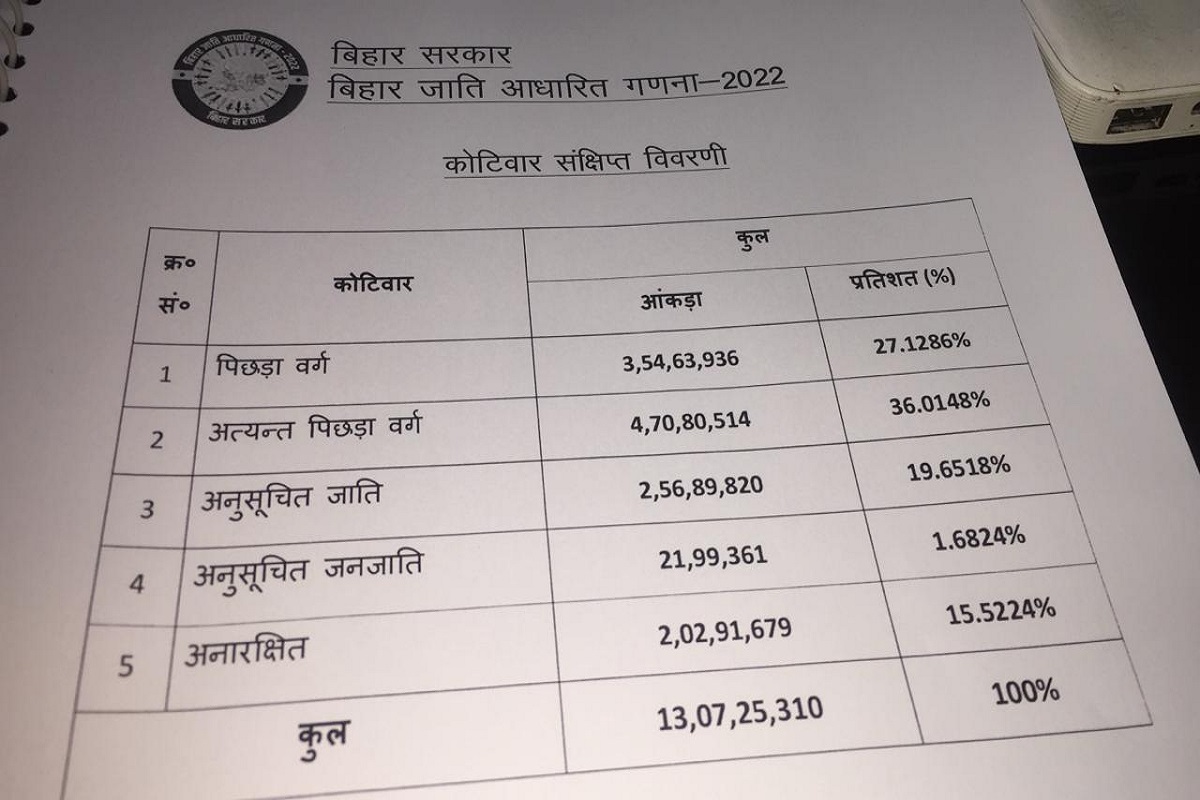Challenge in Bihar
In the tumultuous arena of Bihar politics, where alliances shift like sand dunes in the wind, this election seems poised to redefine the political landscape.
The results of a state-level survey, India’s first caste-based count since a 1931 census, were made public by Bihar

If caste census finally takes place in one state or the other, the national caste census would not be far behind. And therefore the word “historic” may no longer have the same impact due to its overuse, but if Bihar’s caste count resurrects the Mandal movement in Indian politics and forces a revision of the quota system, it would qualify.
On October 2, the likelihood of both increased. The results of a state-level survey, India’s first caste-based count since a 1931 census, were made public by Patna. That Raj-era practice was abandoned because it was criticized for hard-coding such identities. Identity politics, alas, have become unavoidable.
The Bharatiya Janata Party (BJP), the dominating force in our political arena, has always banked on Hindu consolidation as part of its electoral game-plan, but it gained strength under Narendra Modi’s leadership from a vote flip among Other Backward Classes (OBCs), who likely make up the majority of the population.
Advertisement
The alliance known as INDIA, which is challenging the BJP for the 2024 election, is determined to make caste injustice a central theme of its campaign for the same general electorate. An all-India caste census now appears to be all but inevitable, with the mechanics of our democracy being influenced by changes in OBC support and the public’s hunger for data being piqued by the hot news of Bihar’s caste split. Even the BJP could discover that this proposition cannot be stopped, despite all the uneasiness it generates.
Caste census proponents contend that if the nation accepts three fundamental premises—that there are more than just correlations between caste and life outcomes, that a caste-based hierarchy has existed for centuries, and that job and educational reservations are legitimate tools for upliftment—then affirmative action by the Indian state requires an updated dashboard of data on everyone who would qualify for it, rather than relying on educated guesses derived from questionable historical data.
The headline-grabbing statistic from Monday’s publication was that just 15.5% of the almost 131 million people in Bihar fall into the general group, making up around 84.5% of the state’s population. Any such poll is undoubtedly susceptible to epistemic scrutiny.
Advertisement